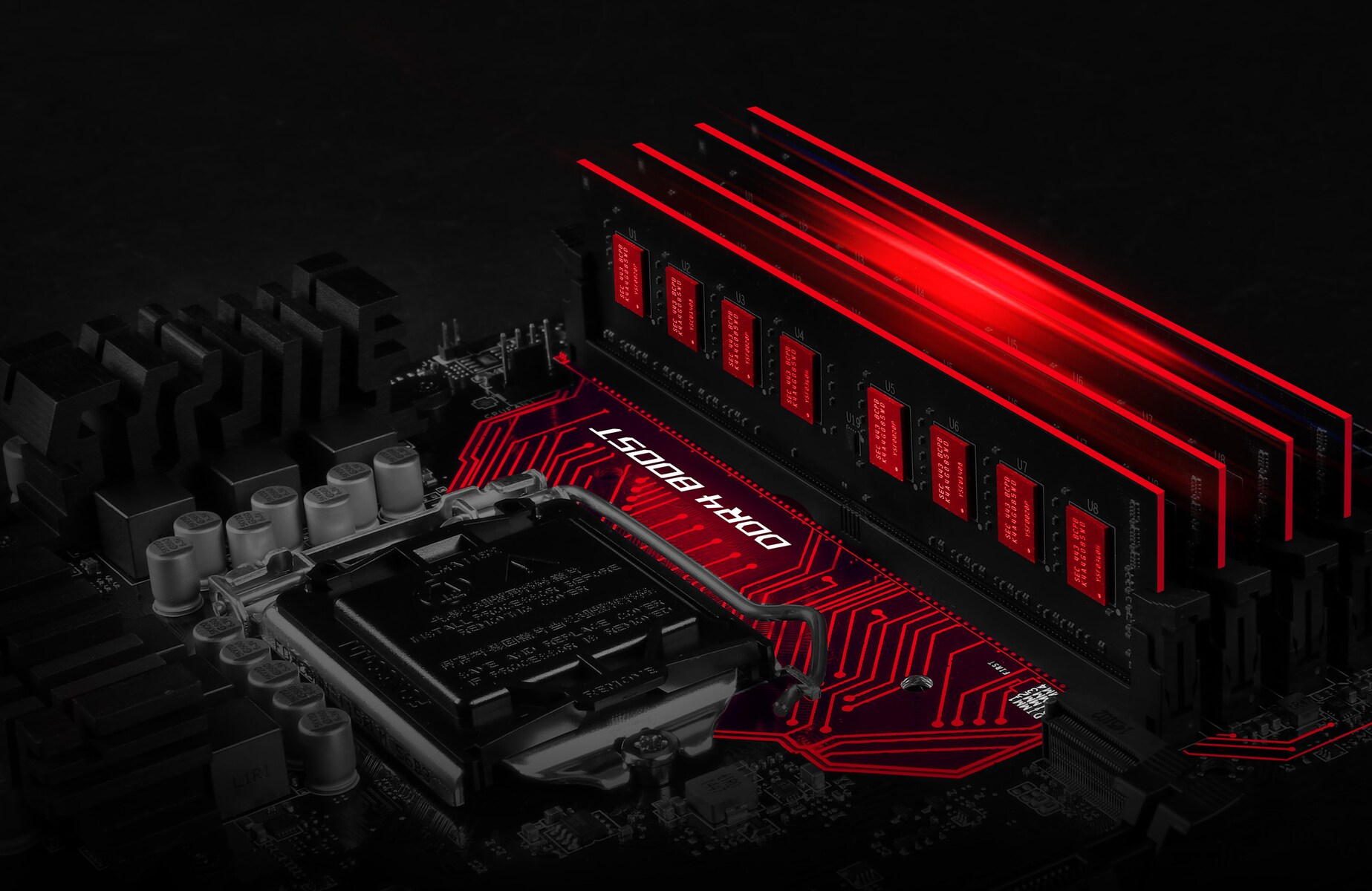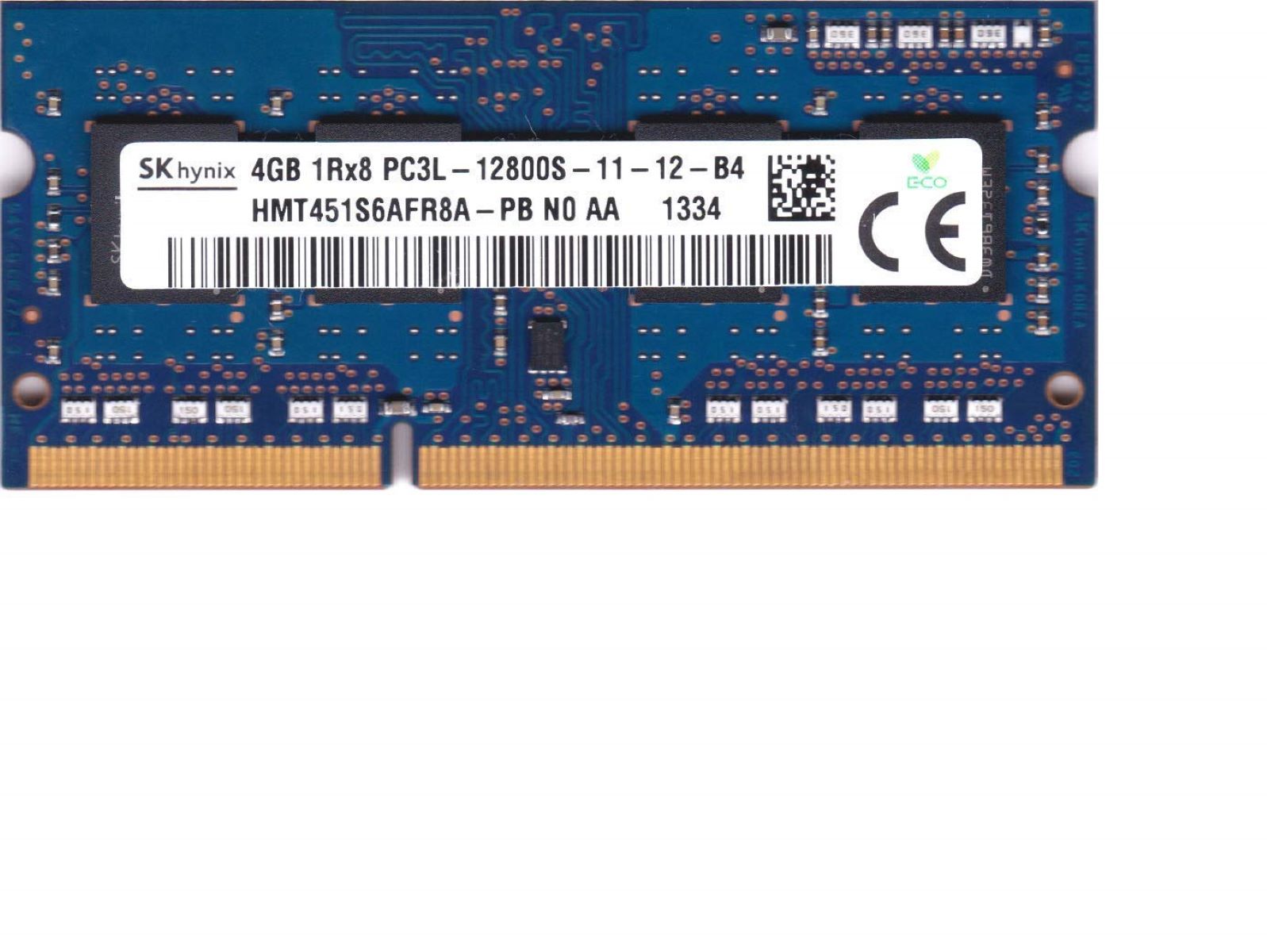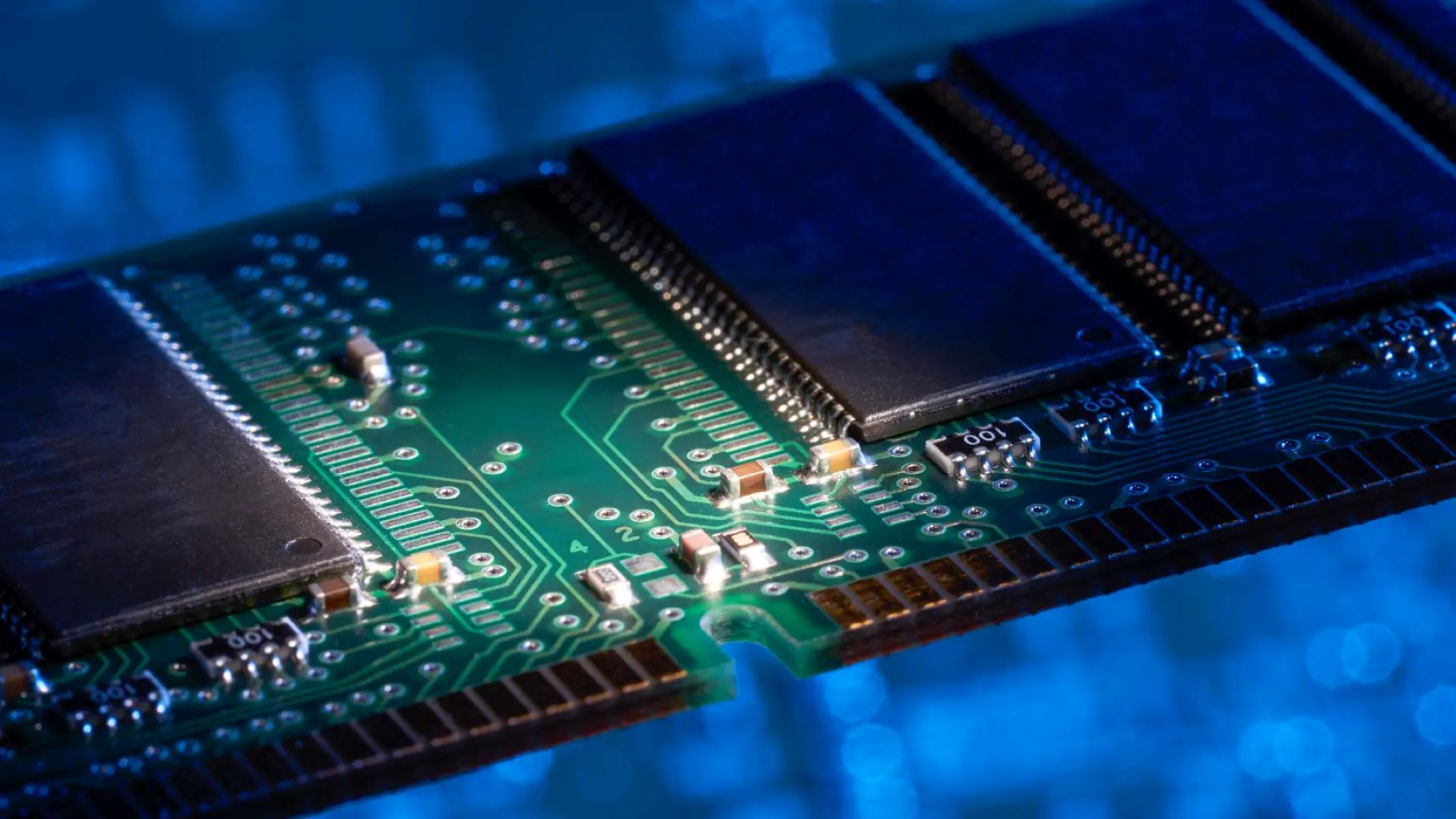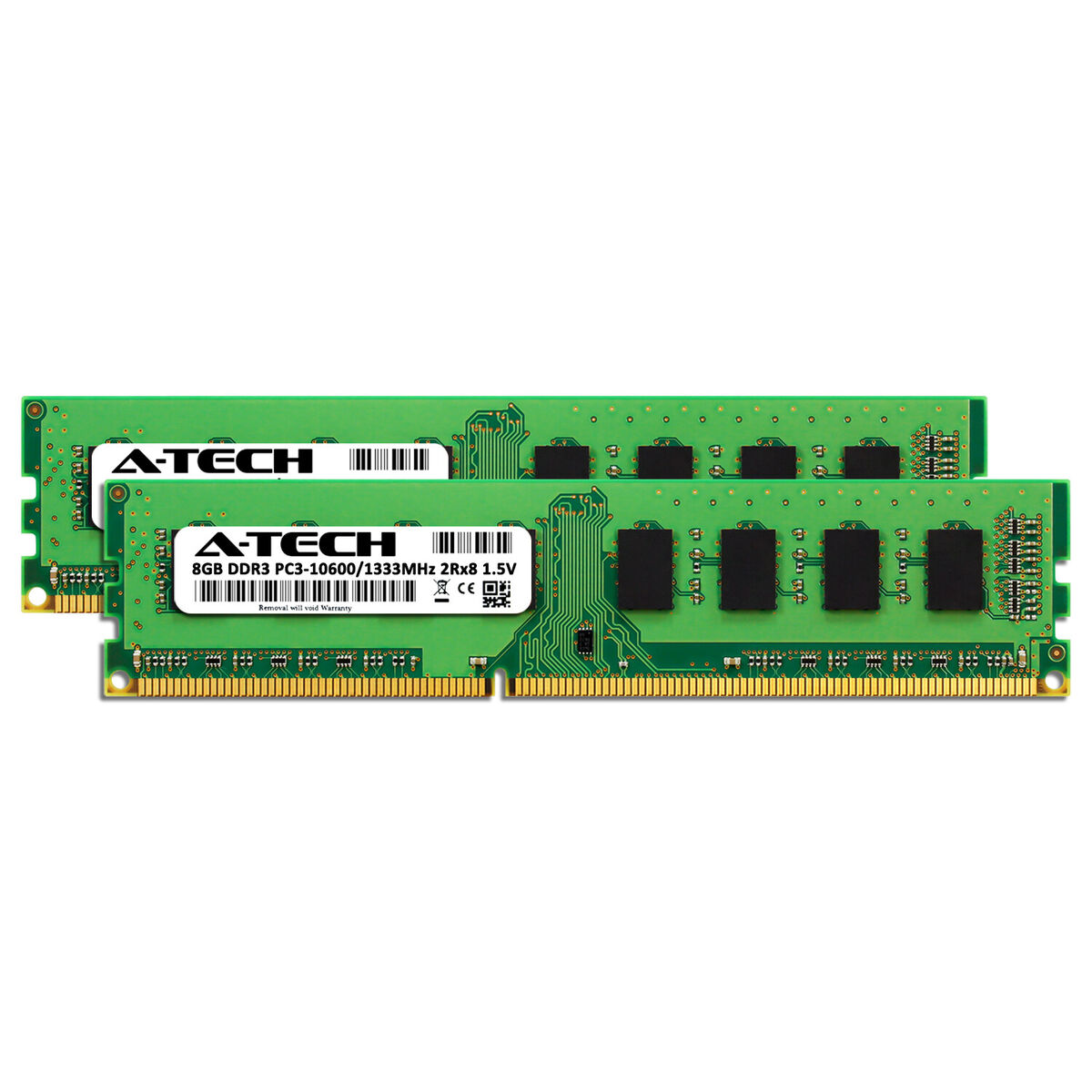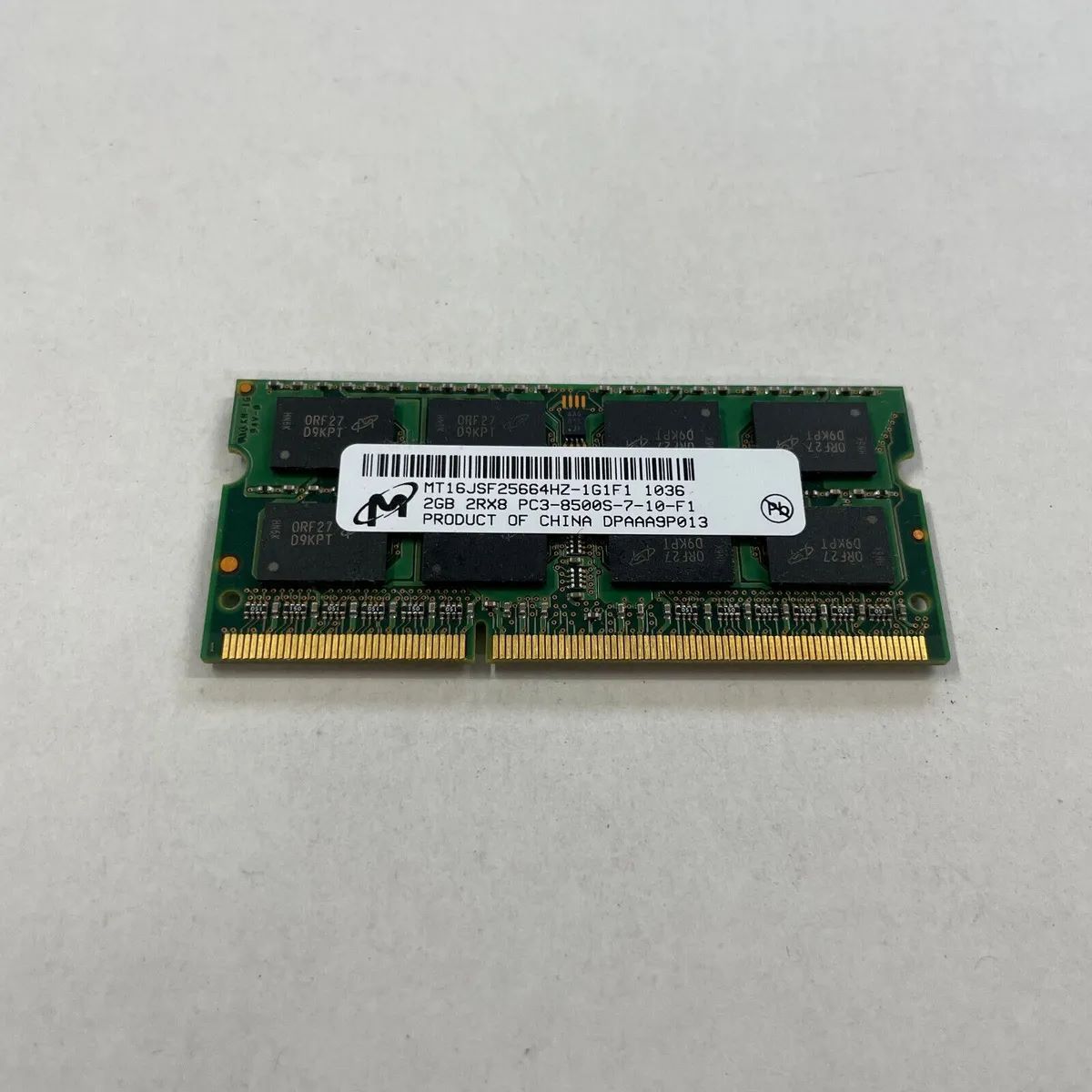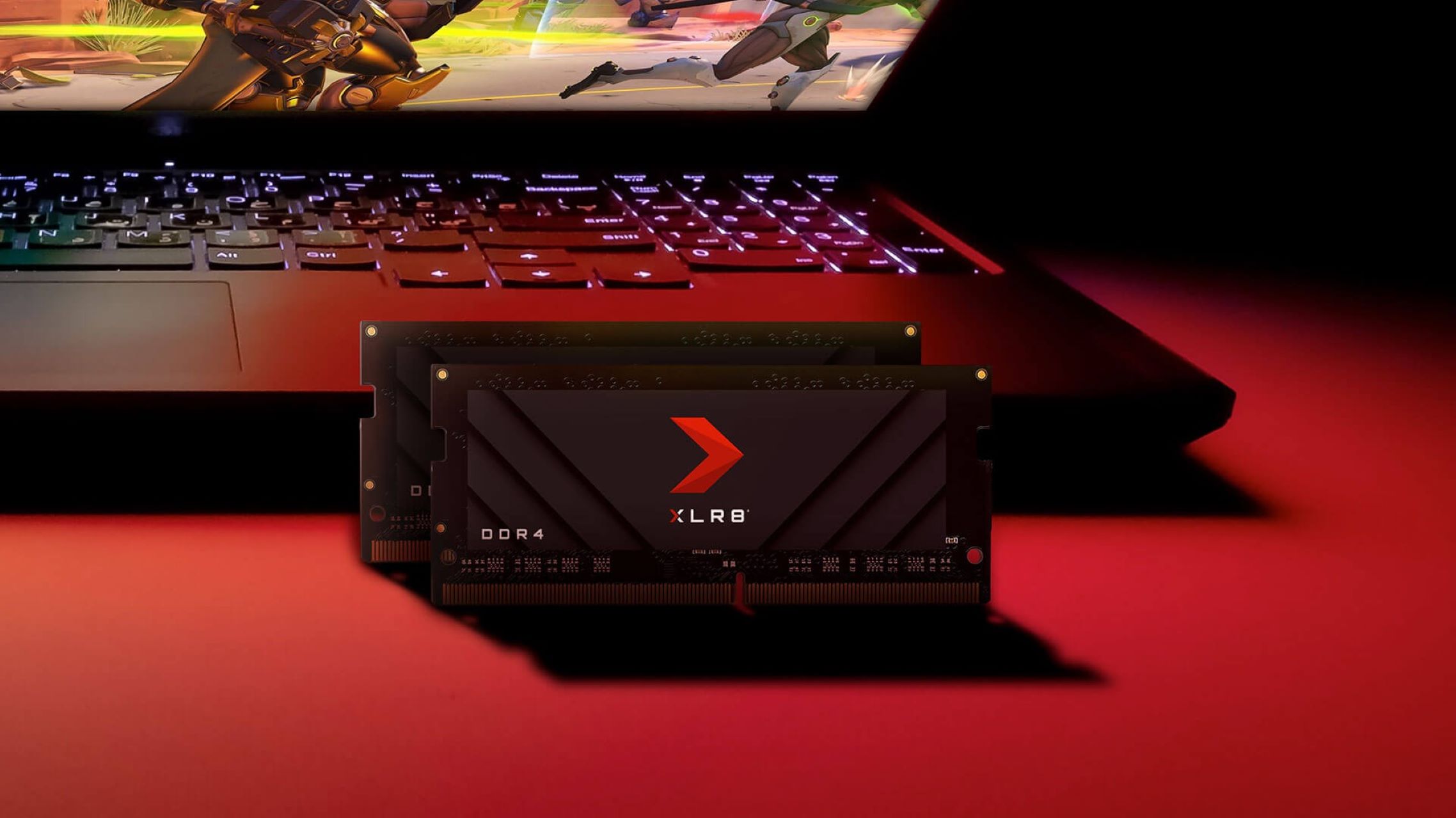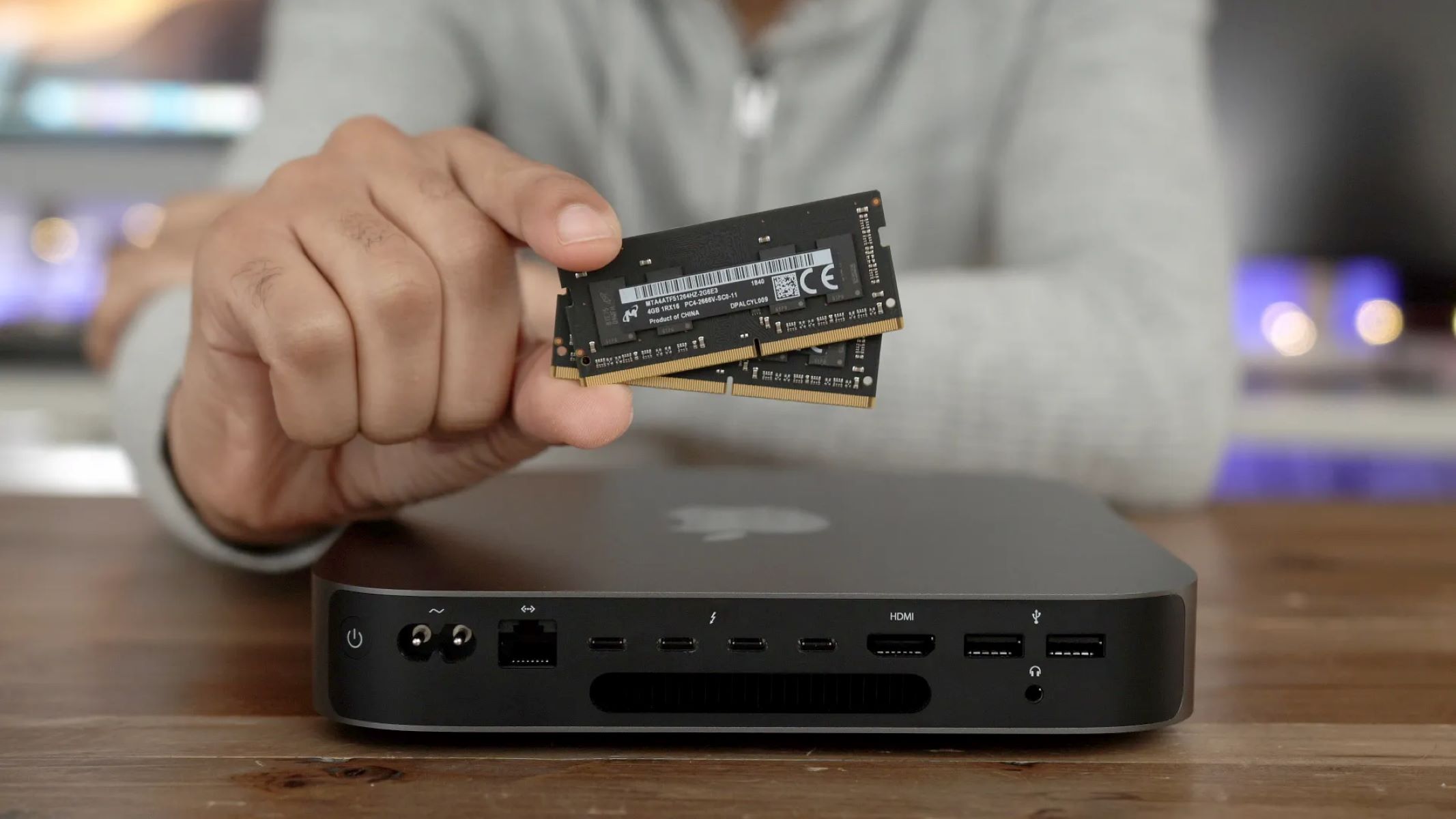Introduction
With the constant advancement of technology, we find ourselves relying heavily on our devices, whether it’s for work, entertainment, or communication. As we multitask and run numerous applications simultaneously, the demand for system resources increases. One crucial resource that directly impacts overall performance is RAM (Random Access Memory).
RAM plays a vital role in the functionality of our devices by providing quick access to data that our processors need to operate efficiently. It acts as a temporary storage space, allowing our devices to store and retrieve data quickly. However, as we continue to use our devices and install new applications, the available RAM can become limited, resulting in sluggish performance and slow application load times.
Fortunately, there are methods available to boost RAM and improve the performance of our devices. By optimizing the allocation of available memory, we can enhance the overall speed and responsiveness, allowing for a smoother user experience.
In this article, we will delve into the concept of boosting RAM, exploring its significance and the various methods to accomplish it. So, if you’re tired of your device struggling to keep up with your multitasking demands, read on to discover how you can give your RAM a boost and optimize performance.
Understanding RAM
Before diving into the methods of boosting RAM, it’s essential to have a basic understanding of what RAM is and how it functions. RAM, or Random Access Memory, is a volatile type of memory that stores data and instructions that the processor needs to access quickly. It acts as a middleman between the processor and the storage drive, providing temporary storage for active programs and data.
When you power on your device and launch applications, they are loaded into the RAM, allowing for faster access to data compared to retrieving it from the slower storage drive. The more RAM your device has, the more data and programs it can store in memory, resulting in improved multitasking capabilities and quicker response times.
RAM is different from the long-term storage provided by hard drives or solid-state drives (SSDs) as it is cleared every time you power off your device. Once the device is turned off, the contents of the RAM are lost, and the memory becomes available to store new data upon the next boot.
It’s important to note that RAM alone does not determine the overall speed and performance of a device. The speed of accessing data from the RAM is measured in megahertz (MHz) or gigahertz (GHz) and is referred to as the RAM’s clock speed. Higher clock speeds allow for faster data transfer, resulting in snappier performance. Additionally, the processor and storage drive also play crucial roles in overall system performance.
As we use our devices and run various applications simultaneously, the amount of available RAM decreases. This can lead to slower performance, as the device struggles to juggle multiple tasks within the limited memory space. However, fear not, as there are methods available to boost RAM and optimize the allocation of memory, ensuring smoother operation and improved multitasking capabilities.
What does it mean to boost RAM?
Boosting RAM refers to the process of optimizing and enhancing the available memory on a device to improve its overall performance. It entails various techniques and strategies to maximize the allocation of RAM and ensure that it is efficiently utilized for running applications and storing data.
When we talk about boosting RAM, we are essentially looking to increase the amount of free memory or optimize the usage of existing memory so that the device can handle more tasks simultaneously without experiencing a significant performance hit.
Boosting RAM can involve different approaches, such as clearing cache, closing background apps, increasing virtual memory, removing unnecessary software, or upgrading physical RAM. The choice of method depends on the specific device, its operating system, and the user’s requirements.
It’s important to note that boosting RAM does not increase the actual physical memory installed in the device. Instead, it focuses on efficient utilization and management of the available memory, ensuring that it is effectively used to deliver a smoother and more responsive experience for the user.
By boosting RAM, you can expect improved multitasking capabilities, faster application load times, and smoother overall performance. It allows you to run resource-intensive programs or perform demanding tasks without encountering slowdowns or system freezes.
Whether you’re a student needing to run multiple applications for research and assignments, a professional looking to streamline work processes, or a gamer seeking optimal performance, boosting RAM can provide a noticeable improvement in your device’s performance.
In the following sections, we will explore various methods to boost RAM and delve into the details of each approach. By implementing these techniques, you can optimize the usage of available memory and enjoy an enhanced user experience on your device.
How does boosting RAM improve performance?
Boosting RAM can significantly improve the performance of your device by allowing it to efficiently handle demanding tasks and run multiple applications simultaneously. When the available RAM is limited, the device may struggle to allocate memory to different tasks, resulting in slowdowns, lag, and even crashes. By optimizing the allocation of memory, you can expect the following benefits:
- Improved Multitasking: Boosting RAM ensures that your device can handle multiple applications and tasks without sacrificing performance. When there is sufficient free memory, the device can swiftly switch between different programs, allowing for seamless multitasking.
- Faster Application Load Times: With more free memory, applications can be loaded into RAM quickly, reducing load times. This translates to a more responsive user experience as you launch applications or switch between them.
- Reduced Lag: In games or resource-intensive applications, insufficient RAM can lead to laggy and choppy performance. Boosting RAM provides the necessary memory for smooth gameplay and ensures that the device can handle the demands of these applications.
- Enhanced System Stability: Insufficient RAM can cause system instability and crashes, especially when running memory-intensive applications. By boosting RAM, you reduce the chances of encountering system errors and unexpected shutdowns, providing a more stable computing environment.
- Overall Speed and Responsiveness: When your device has enough free memory, it can respond quickly to your commands and perform tasks smoothly. Boosting RAM improves the overall speed and responsiveness of your device’s operating system, making everyday tasks feel snappier and more efficient.
It’s worth noting that boosting RAM alone cannot solve all performance issues. Other hardware components, such as the processor and storage drive, also play crucial roles in determining overall performance. However, by optimizing the allocation of available memory, you can ensure that your device makes the most of its resources, resulting in a noticeable improvement in performance.
In the next sections, we will explore different methods to boost RAM, each targeting specific areas of memory management. By implementing these techniques, you can maximize the available memory and enjoy a more efficient and responsive computing experience.
Methods to boost RAM
Boosting RAM involves utilizing various techniques and strategies to optimize the allocation and usage of memory. By implementing these methods, you can effectively increase the available free memory or ensure that the existing memory is utilized more efficiently. Below are some effective methods to boost RAM:
- Clearing Cache: Cached data from applications can accumulate over time, occupying valuable memory. By clearing the cache regularly, you can free up RAM and eliminate unnecessary data, leading to improved performance.
- Closing Background Apps: Background apps consume memory even when you’re not actively using them. Closing or disabling unnecessary background apps frees up memory for other tasks, boosting overall performance.
- Increasing Virtual Memory: Virtual memory allows your device to use a portion of the storage drive as additional RAM. By increasing the virtual memory allocation, you provide extra memory for the system to use when the physical RAM is insufficient.
- Removing Unnecessary Software: Uninstalling unused or unnecessary software can free up valuable disk space, which indirectly helps boost RAM. With more free space on the storage drive, the system can allocate more virtual memory to serve as additional RAM.
- Upgrading RAM: If your device’s RAM is expandable, upgrading it by installing higher-capacity memory modules can provide a significant boost in performance. This method physically increases the amount of available RAM, allowing your device to handle more demanding tasks and applications.
It’s important to note that the effectiveness of these methods may vary depending on the device, operating system, and specific usage scenarios. Some devices may have limitations on the amount of virtual memory that can be allocated or the maximum capacity of RAM that can be installed.
Therefore, it’s advisable to research and understand the capabilities and limitations of your device before implementing any of these methods. Additionally, it’s recommended to regularly maintain and optimize your device’s RAM to ensure optimal performance over time.
Now that we’ve explored the methods to boost RAM, in the following sections, we will provide detailed instructions on how to implement each of these techniques. By following these guidelines, you can optimize the usage of your device’s memory and experience a noticeable improvement in performance.
Clearing Cache
Clearing the cache is an effective method to boost RAM and improve the overall performance of your device. Cached data refers to temporary files stored by applications to provide quick access to frequently used data or to enhance user experience. While caching can improve load times for certain apps, excessive buildup of cache can consume a significant amount of memory, leading to slower performance. By clearing the cache regularly, you can free up valuable RAM and ensure that memory is utilized efficiently.
The process of clearing the cache may vary depending on the operating system and device, but the general steps are as follows:
- Android: On Android devices, go to the “Settings” menu and navigate to the “Storage” or “Storage & memory” option. From there, find the list of installed apps and select the app whose cache you want to clear. Tap on the “Clear cache” button or option to remove the cached data for that particular app. Alternatively, you can use cleaning apps or system optimization tools available on the Google Play Store to clear cache for multiple apps at once.
- iOS (iPhone/iPad): On iOS devices, the process for clearing cache varies between apps. Generally, you can go to the “Settings” menu, select the app, and look for an option to clear cache or data associated with that app. Safari, the default web browser on iOS, has a separate option to clear its cache and browsing history. To clear Safari cache, go to “Settings” > “Safari” > “Clear History and Website Data.
- Windows: On Windows devices, clearing cache involves using the Disk Cleanup tool. Open the Start menu and search for “Disk Cleanup” or find it within the System Tools folder. Launch the Disk Cleanup tool and select the drive where your operating system is installed (usually the C: drive). Once the scan is complete, check the “Temporary files” option and any other categories you want to clear, then click “OK” or “Clean up system files” to remove the cached files.
- macOS: On macOS, clearing cache is slightly different depending on the version. For macOS Sierra and later, you can go to the “Finder” menu, select “Go”, and click on “Go to Folder”. Enter “~/Library/Caches” in the dialogue box and press “Go”. This will open the “Caches” folder, where you can manually delete the contents of specific app caches. Alternatively, you can use third-party cleaning apps available for macOS to clear cache and other temporary files.
By regularly clearing cache, you can free up valuable memory and ensure that your device has more RAM available for active tasks. This can result in faster app loading, smoother multitasking, and improved overall performance.
Keep in mind that clearing cache will not delete any essential data or settings associated with an app. It only removes temporary files that are no longer needed. After clearing the cache, you may experience slightly longer load times for certain apps as they rebuild their caches, but this should improve over time as the cache is gradually rebuilt.
Now that you know how to clear cache, let’s move on to the next method: closing background apps.
Closing Background Apps
Closing background apps is another effective method to boost RAM and improve the performance of your device. Background apps are the ones that continue to run in the background even when you’re not actively using them. Although these apps may not be visible on your screen, they consume valuable system resources, including RAM. By closing unnecessary background apps, you can free up memory and ensure that it is allocated to the active tasks and applications you’re using.
The process of closing background apps may vary depending on the operating system and device, but the general steps are as follows:
- Android: On most Android devices, you can access the list of recently used apps by either tapping the square or the recent apps button. Swipe left or right to navigate through the list of apps. To close an app, swipe it left or right or swipe it up, depending on your device. Some devices may have a clear all or close all button to close all background apps at once.
- iOS (iPhone/iPad): On iPhones or iPads without a home button, swipe up from the bottom of the screen and pause slightly in the middle of the screen to access the app switcher. On devices with a home button, double-click the home button to access the app switcher. In the app switcher, swipe left or right to find the app(s) you want to close. Swipe up on the app preview to close it. You can swipe multiple apps at once to close them simultaneously.
- Windows: On Windows devices, press the Alt + Tab keys simultaneously to access the app switcher. Use the Tab key or arrow keys to navigate to the desired app, and then press the Del or F4 key to close it. Alternatively, you can right-click on the taskbar and select “Task Manager”. In the Task Manager, go to the “Processes” or “Details” tab, locate the app(s) you want to close, right-click on it, and select “End task”.
- macOS: On macOS, you can access the app switcher by pressing Command + Tab. Keep holding the Command key and press Tab to cycle through open apps. Release both keys to select the desired app. Once an app is selected, you can either press Command + Q to quit the app or press Command + H to hide it. To force quit an unresponsive app, press Command + Option + Esc simultaneously, select the app, and click “Force Quit”.
By closing background apps that you’re not actively using, you can free up memory and ensure that your device has more RAM available for the tasks you want to prioritize. This can result in improved multitasking capabilities and overall performance, making your device feel more responsive and efficient.
It’s worth noting that some operating systems, such as iOS, have optimized background app management, meaning that they will automatically suspend or close background apps as needed. However, closing apps manually can still free up additional RAM and help ensure optimal performance.
Now that you know how to close background apps, let’s explore the next method: increasing virtual memory.
Increasing Virtual Memory
Increasing virtual memory is a method to boost RAM by utilizing a portion of your storage drive as additional memory. Virtual memory acts as an extension of your physical RAM, allowing your device to access more memory when the physical RAM is insufficient for running applications.
The process of increasing virtual memory may vary depending on the operating system, but the general steps are as follows:
- Windows: On Windows devices, you can adjust virtual memory settings by accessing the System Properties. Right-click on the “This PC” or “My Computer” icon, select “Properties”, and click on “Advanced system settings”. In the “System Properties” window, go to the “Advanced” tab and click on “Settings” under the “Performance” section. In the “Performance Options” window, go to the “Advanced” tab and click on “Change” under the “Virtual memory” section. Uncheck the box that says “Automatically manage paging file size for all drives” and select the drive where you want to adjust virtual memory. Choose the “Custom size” option and enter the initial size and maximum size for the virtual memory. Click “Set” and then “OK” to apply the changes.
- macOS: On macOS, virtual memory management is handled automatically by the system. However, you can still adjust the settings if needed. Open the “Finder” and go to “Applications” > “Utilities” > “Activity Monitor”. In the Activity Monitor window, select the “Memory” tab. At the bottom, you will see the “Swap Used” value, which indicates the amount of virtual memory in use. If you want to increase or decrease the size of the virtual memory, it is recommended to upgrade the physical RAM instead.
- Linux: On Linux systems, virtual memory settings can be adjusted using the “sysctl” command or by editing the “/etc/sysctl.conf” file. Consult the documentation specific to your Linux distribution for detailed instructions on adjusting virtual memory settings.
Increasing the virtual memory allows your device to use a portion of the storage drive as additional memory when the physical RAM is full. However, it’s important to note that virtual memory is slower than physical RAM due to the limitations of storage drives. As a result, excessive reliance on virtual memory may lead to slightly slower performance compared to using physical RAM.
It’s recommended to set the initial and maximum size of virtual memory to adequate values to ensure optimal performance. A good starting point is to set the initial size to the same value as the recommended amount of physical RAM installed in your device and set the maximum size to a larger value if needed. However, it’s important not to set the virtual memory size too high, as it may result in excessive disk activity and slower performance.
By increasing virtual memory, you provide your device with additional memory resources, allowing it to handle more demanding tasks and applications. This can result in improved performance, especially when running memory-intensive programs or multitasking with multiple applications simultaneously.
Now that you know how to increase virtual memory, let’s move on to the next method: removing unnecessary software.
Removing Unnecessary Software
Removing unnecessary software is a method to boost RAM by freeing up valuable disk space, indirectly resulting in improved memory allocation and performance. Over time, we may install various applications on our devices that we no longer use or need. These unused programs take up storage space and may run background processes, consuming valuable system resources, including RAM. By removing unnecessary software, you can create more free space on your storage drive, allowing the system to allocate more virtual memory as additional RAM.
The process of removing unnecessary software may vary depending on the operating system, but the general steps are as follows:
- Windows: On Windows devices, open the “Settings” menu and go to “Apps” or “Apps & Features”. This will display a list of installed apps on your device. Select the app you want to remove and click on the “Uninstall” button. Follow the on-screen prompts to complete the uninstallation process. Alternatively, you can use third-party uninstaller software to help remove multiple applications at once.
- macOS: On macOS, open the “Finder” and go to the “Applications” folder. Locate the app you want to remove, right-click on it, and select “Move to Trash”. Alternatively, you can drag the app icon to the Trash icon in the dock. Once the app is in the Trash, right-click on the Trash icon and select “Empty Trash” to permanently delete the app.
- Linux: On Linux systems, the process of removing unnecessary software depends on the package manager used by your distribution. You can use the respective package manager commands, such as “apt-get” for Debian-based systems or “dnf” for Fedora-based systems, to uninstall software. Consult the documentation specific to your Linux distribution for the exact command to remove software.
When removing unnecessary software, it’s important to be cautious and ensure that you’re not uninstalling any critical applications or system components. Take the time to review the list of installed apps and identify the ones that you no longer need or use. Carefully consider the implications of removing an app before proceeding.
By removing unnecessary software, you can free up valuable storage space, indirectly allowing for more efficient memory allocation. This can lead to improved performance as the system has more virtual memory available to allocate as additional RAM.
Remember to periodically review the installed software on your device and uninstall any apps that have become obsolete or are no longer needed. This will help maintain an optimized system with ample storage space and efficient memory utilization.
Now that you know how to remove unnecessary software, let’s move on to the next method: upgrading RAM.
Upgrading RAM
Upgrading RAM is a hardware-based method to boost RAM by physically adding more memory modules to your device. This method is highly effective for improving performance, especially if you frequently run memory-intensive applications or multitask with several programs simultaneously.
The process of upgrading RAM involves the following steps:
- Determine compatibility: Before purchasing new RAM modules, ensure they are compatible with your device. Check the specifications of your device’s motherboard or consult the manufacturer’s documentation to determine the type, speed, and maximum supported capacity of RAM.
- Purchase the appropriate RAM: Once you have determined the specifications for your device, purchase the required RAM modules from a reputable vendor. Make sure to buy memory modules with the correct type, speed, and capacity.
- Prepare for installation: Before installing the new RAM, properly ground yourself to avoid static electricity. Refer to your device’s documentation to locate the RAM slots. Ensure your device is powered off, disconnected from the power source, and any peripherals are disconnected.
- Install the new RAM: Carefully insert the RAM module into the appropriate slot. Press firmly to ensure it is fully inserted, and the retaining clips click into place. Repeat this process for any additional modules you are installing.
- Power up and verify: Once the new RAM is installed, reconnect the power source and any peripherals. Power on your device and check the operating system or system BIOS to ensure it recognizes the new RAM. It should display the increased amount of memory in the system information.
Upgrading RAM can provide a significant performance boost, allowing your device to handle more demanding tasks, run memory-intensive applications smoothly, and improve overall multitasking capabilities. The additional RAM enables your device to store and access more data quickly, reducing the need for frequent data swapping between RAM and storage drives.
However, it’s important to note that not all devices allow for easy RAM upgrades. Some devices, such as smartphones and tablets, have non-expandable memory integrated into the mainboard. In such cases, upgrading RAM may not be possible or practical.
Prior to upgrading RAM, consider your specific needs and usage patterns to determine if the investment is worthwhile. Consulting with a knowledgeable technician or the device manufacturer can also provide guidance on whether upgrading RAM is feasible and beneficial for your particular device.
Now that you know how to upgrade RAM, you have one more powerful method to boost the performance of your device.
Conclusion
Boosting RAM is an effective way to improve the performance of your device, allowing it to handle more tasks and applications simultaneously. By optimizing the allocation of available memory, you can experience smoother multitasking, faster application load times, and overall improved responsiveness.
In this article, we discussed the importance of RAM and its role in device performance. We explored the concept of boosting RAM and the various methods to achieve it. Clearing cache, closing background apps, increasing virtual memory, removing unnecessary software, and upgrading RAM are all effective techniques to optimize memory usage.
Clearing cache helps free up RAM by removing temporary files and data stored by apps. Closing background apps prevents them from consuming memory resources when they are not actively in use. Increasing virtual memory allows your device to utilize a portion of the storage drive as additional memory when physical RAM is limited. Removing unnecessary software helps free up storage space, indirectly improving memory allocation. Upgrading RAM, on the other hand, physically adds more memory to your device, providing a significant boost to performance.
Remember that each device may have different limitations and capabilities, so it’s important to research and understand your device’s specifications and operating system requirements before implementing these methods.
By following the methods outlined in this article, you can optimize the usage of available memory and enjoy an enhanced user experience on your device. Whether you’re a student, professional, or casual user, boosting RAM can make a noticeable difference in your device’s performance.
So, take the necessary steps to boost your device’s RAM and unlock its full potential. Enjoy smoother multitasking, faster load times, and overall improved performance. Your device will thank you!







